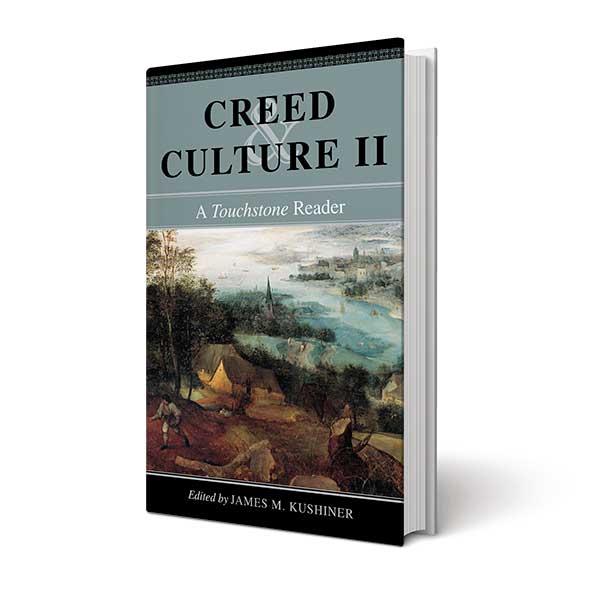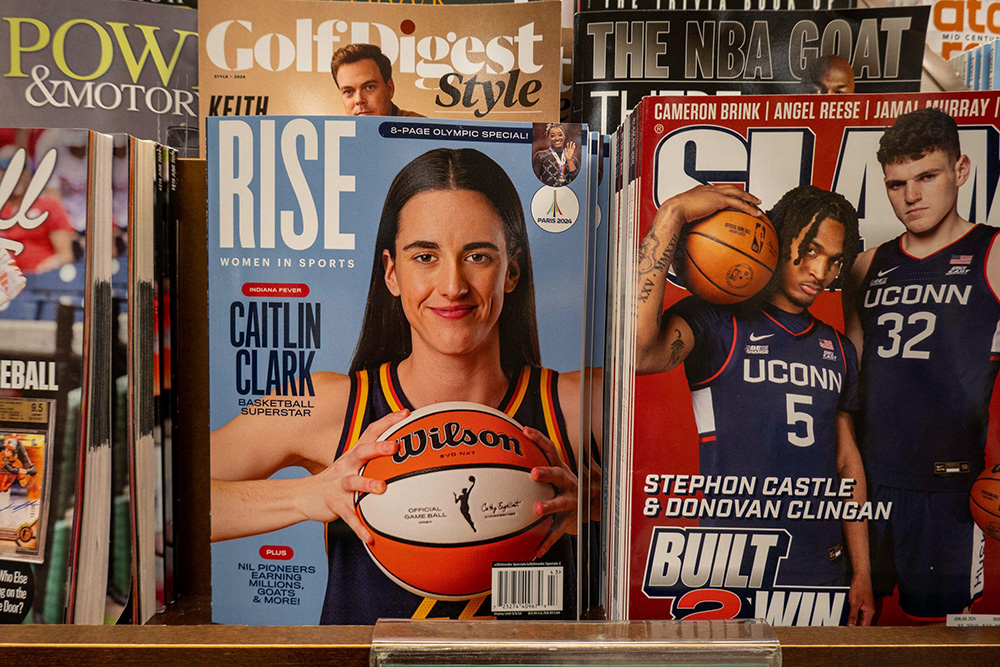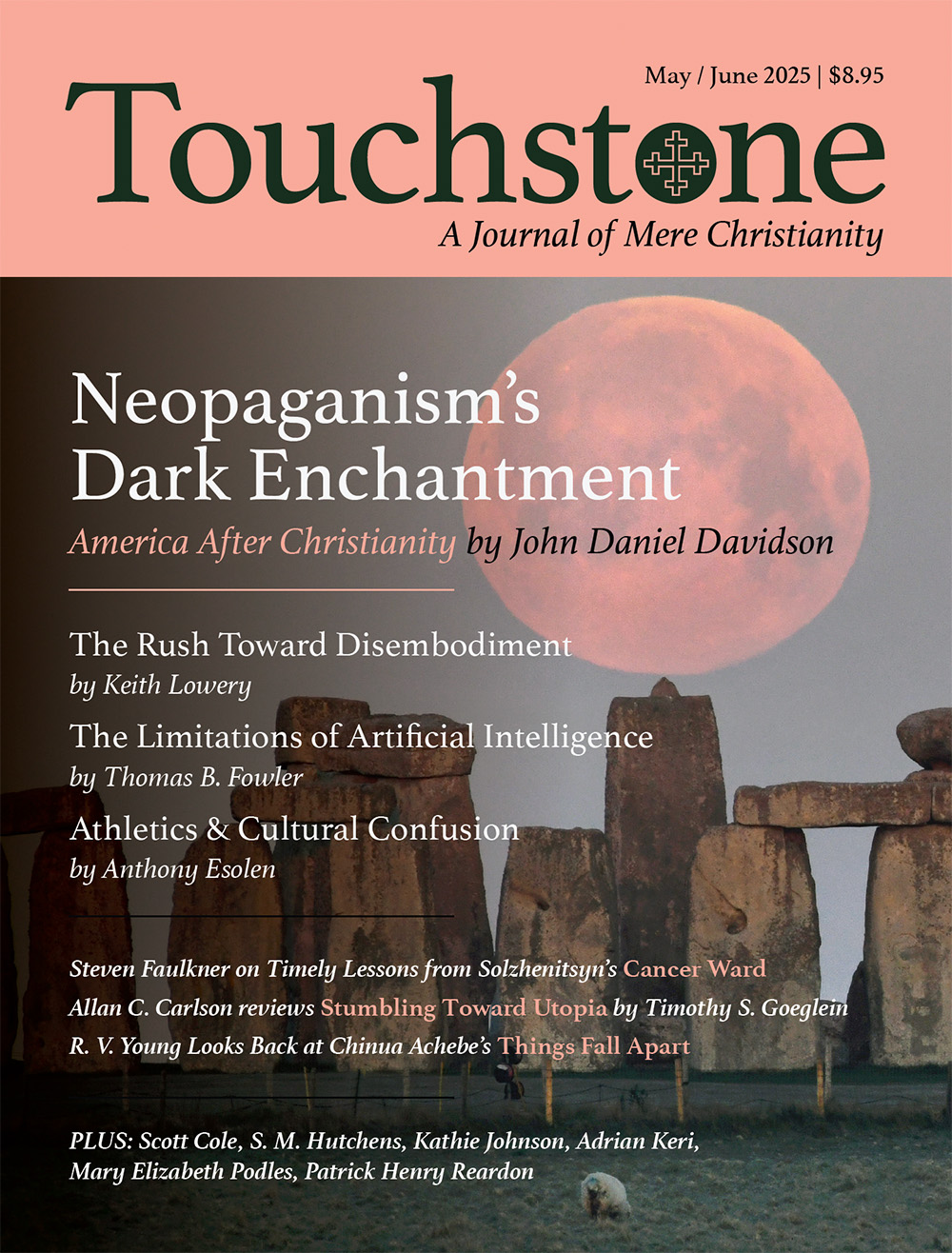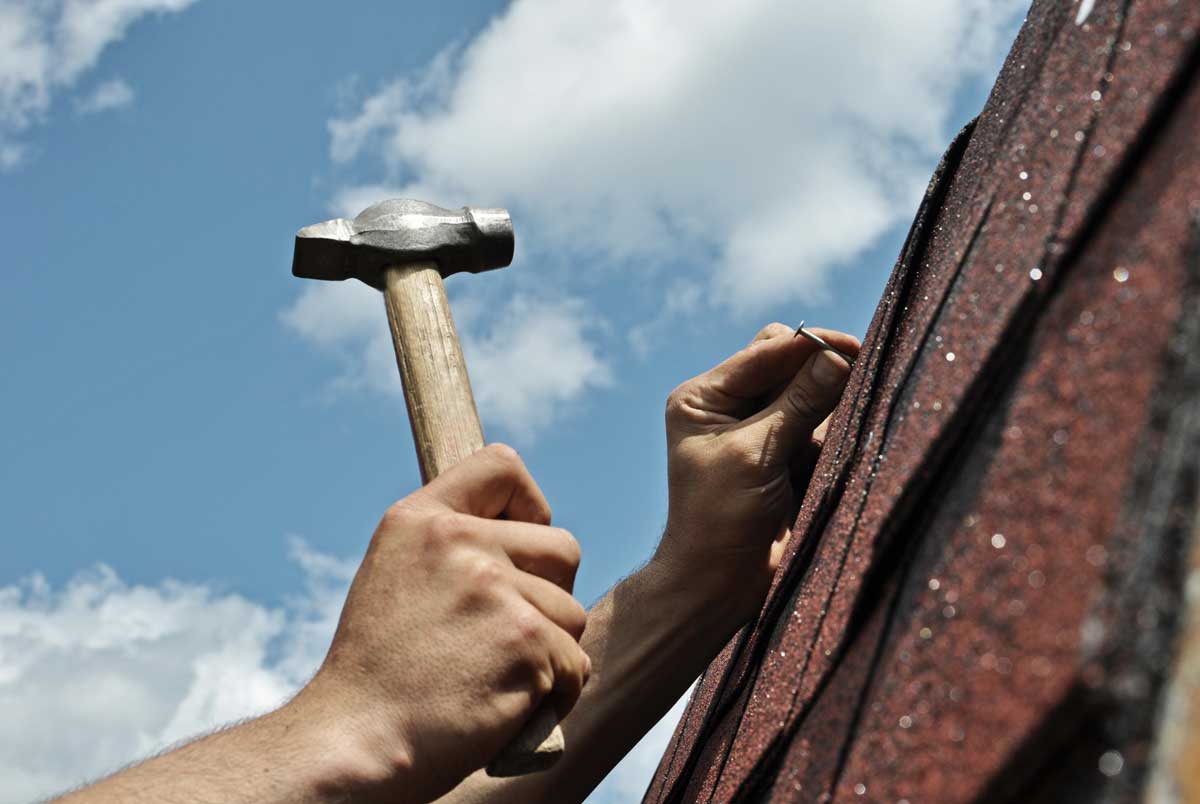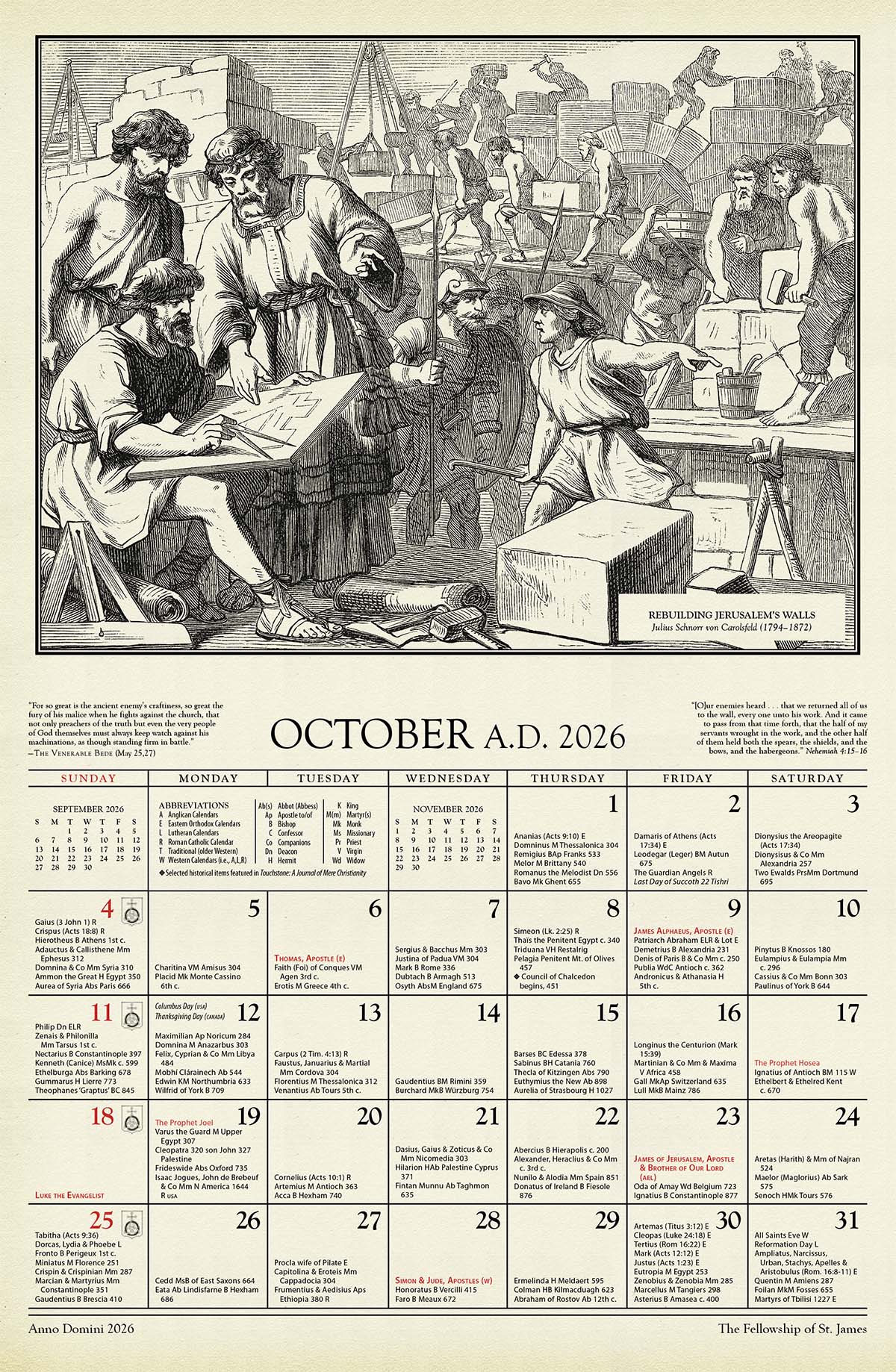Net Effects
Athletics & Cultural Confusion
by Anthony Esolen
The editors of Time magazine recently got tangled up in their own politics when they chose Caitlin Clark, a rookie guard in the WNBA, as the 2024 Athlete of the Year. Earlier in the year, Clark had been the overwhelming choice for best basketball player among college women when she led the nation in points per game and took her team, Iowa, to the national championship, which, however, they lost by twelve points to the undefeated South Carolina . . . Gamecocks? Yes, apparently.
The sticking point was not that Clark is a woman, but that she is white, and she has drawn a lot of attention to the WNBA, a league that has needed it. The league began in 1997, but it still has only 13 teams and plays a short regular season of 40 games. Eight teams make the playoffs, playing best of three in the first round, and best of five for the semifinals and the final. Scoring, despite the lighter and slightly smaller basketball and a three-point line that is over a foot and a half closer to the basket at the top of the key, is noticeably lower than in the men’s game. This difference is partly due to the shorter game, as the women play only 40 minutes to the men’s 48. But the men also take more shots from the field and make more of them than the women do. The men make these baskets against pillars of strength and stature, long-striding legs and whirling arms and muscles that seem to shift in their action as quickly as the light of an electric switch.
Clark had a fine season. She was WNBA Rookie of the Year, and she made the all-league first team. But though she led the league in assists, the statisticians did not rank her among the top 20 players. Her team, the Indiana Fever, finished 20–20 and lost its two playoff games. So there is some reason for other players to grouch at the attention she has gotten in the press. But if it were not for the press and its hype, where would women’s basketball be in the first place? For hype does get into the brain, and it often leads us to take phantasms for reality.
Let me illustrate. I made a comment I thought was well on the generous side, saying that Time’schoice was a bit silly because there were probably several hundred high-school boys’ teams for which Caitlin Clark could not start. Since there are more than 17,000 boys’ teams in the country, it should not have been a stretch to suggest that the top two or three percent of these would have Clark sitting on the bench, if on the team at all. The boys on the high-school national champions, from Link Academy in Branson, Missouri, average 6-foot-6, while the women of the WNBA champions, the New York Liberty (40–11, counting the playoffs), average 6-foot-1. Make the women use the full-size basketball, which is harder to handle, and put the New York Liberty on the same court with the Link Lions or with any of the several hundred teams competitive with them, and the only question is whether the women will get more than a couple of clear shots from the field. The boys will score at will. That is because they are boys—bigger, stronger, sturdier, and quicker than women, with much greater aerobic capacity.
Still, a couple of women took me to task for my comment. I think I know why. Most men and almost all women of our time are far removed from labor that requires great physical strength. I do not simply mean that they do not perform it. They are not in its vicinity. And the choreographed, computer-enhanced films they watch give girls the impression that a roundhouse kick, which is easy to anticipate, can send a man twice the kicker’s weight sprawling across the floor. Men, who can remember when, at 12 or 13 years old, they suddenly surpassed their mothers in strength, are less likely to make this error. You can have your own politics. You cannot have your own physics.
Some Inescapable Anthropology
Nor your own anthropology, and here too, many Christians miss the implications of much of what we have accepted as normal or constructive—and perhaps was so, once. Let us begin by assuming that grace builds upon and perfects nature. What the faith offers is the salvation of men, that is, human beings such as God made us, not whatever creatures we may imagine ourselves to be, and certainly not such as we are with all our cultural and political accidents twisting us out of shape. I am not talking about sin alone, but about the distortions and frustrations we suffer from being in a world of sin and folly, even when these happen not to coincide with any particular sin we have committed.
All sin is harmful, but so too are plenty of things that do not involve personal sin. It is bad for a parent to lock his child in his room all day, every day; it is a sin. But it is also bad for the child to be in that room all the time even if the door is open. It may or may not be sinful, but it is also not good, and such a child will be wizened and rickety and awkward around other children. As I say, you cannot have your own anthropology.
So let us consider this matter of sport, not just for itself, but as an example of poor discernment among Christians, of being content with not sinning, while not pursuing energetically what builds up the soul and promotes the common good. One of my critics said that I had failed to consider “the perfection of the female body,” and that the award could well be given to someone, male or female, who had attained the perfection whereof his or her body was capable. That is an interesting point of view. We might then look to dancers, figure skaters, and gymnasts for the beauty and grace of the female form in motion.
But not, I think, to basketball players. The look is gawky. Anyone who knows basketball will spot the deficiencies immediately: for example, when women take jump shots not from high over the head, but from the head or the chest, to get sufficient leverage from the full arms, rather than from the forearms or the wrists alone, as they heave the ball to the basket. No matter what the women do in this game, they will look like awkward imitations of boys.
And why should they imitate boys? Boys invent sports, and girls do not. This is an anthropological fact, universal in human cultures. Why so? The reasons, I believe, have to do with the nature of the male, and with normal relations between male and female. The boy’s body, with its higher metabolism and greater muscle mass, is restless without action, so unless he has been trained into sloth, he will be out and about, climbing trees, pushing boulders over the sides of hills, and other madcap things that may get him killed. He does so in consonance with the destiny of his sex. He may not know it yet, but such actions will attract the attention of girls, and rightly, because they are a sign, saying such things as, “I am not afraid to take chances,”“I am strong enough to be your provider and defender,” and “I can build the house while you make the home.”
The Meaning of Teams
Anthony Esolen is Distinguished Professor of Humanities at Thales College and the author of over 30 books, including Real Music: A Guide to the Timeless Hymns of the Church (Tan, with a CD), Out of the Ashes: Rebuilding American Culture (Regnery), and The Hundredfold: Songs for the Lord (Ignatius). He has also translated Dante’s Divine Comedy (Random House) and, with his wife Debra, publishes the web magazine Word and Song (anthonyesolen.substack.com). He is a senior editor of Touchstone.
subscription options
Order
Print/Online Subscription
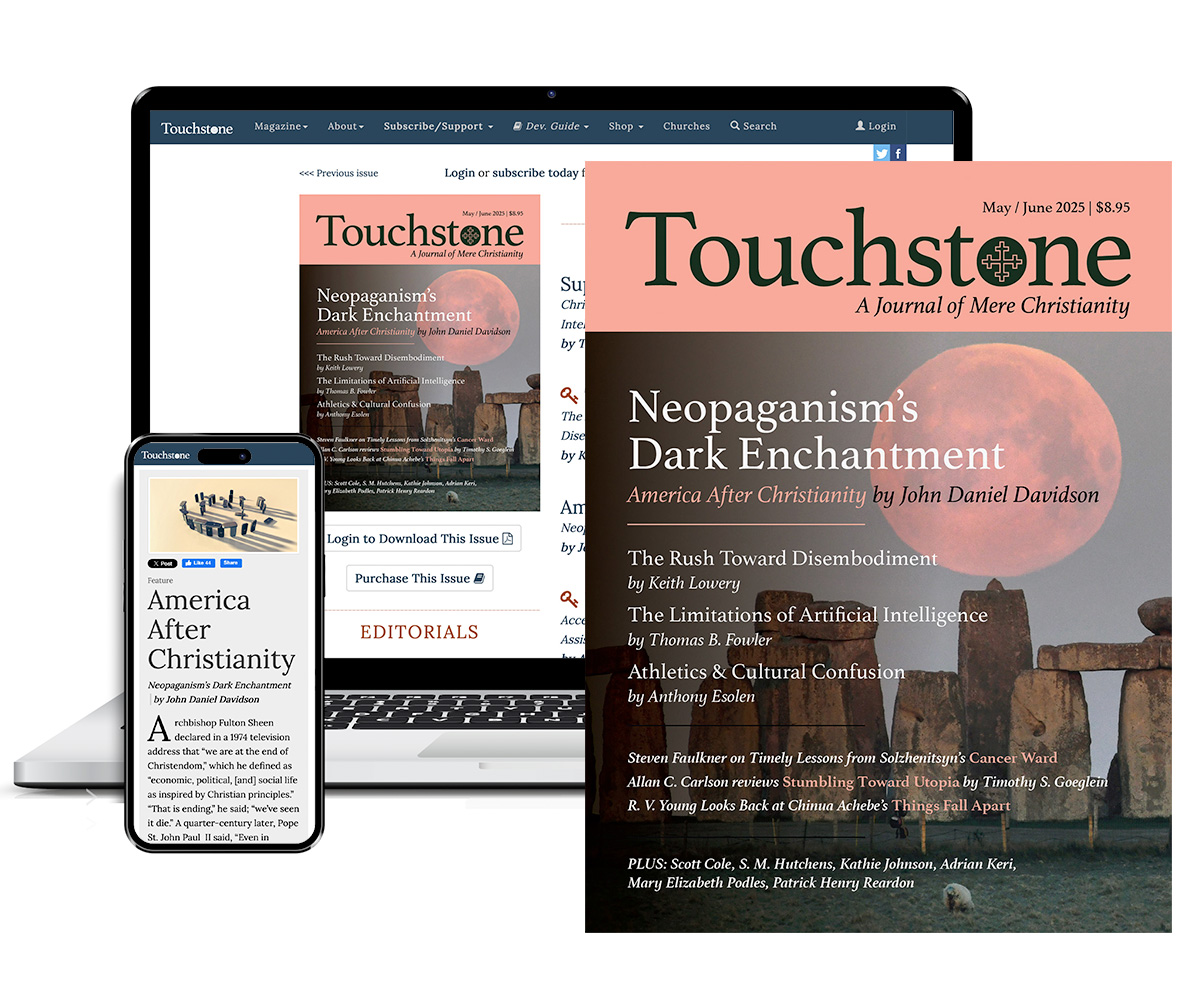
Get six issues (one year) of Touchstone PLUS full online access including pdf downloads for only $39.95. That's only $3.34 per month!
Order
Online Only
Subscription
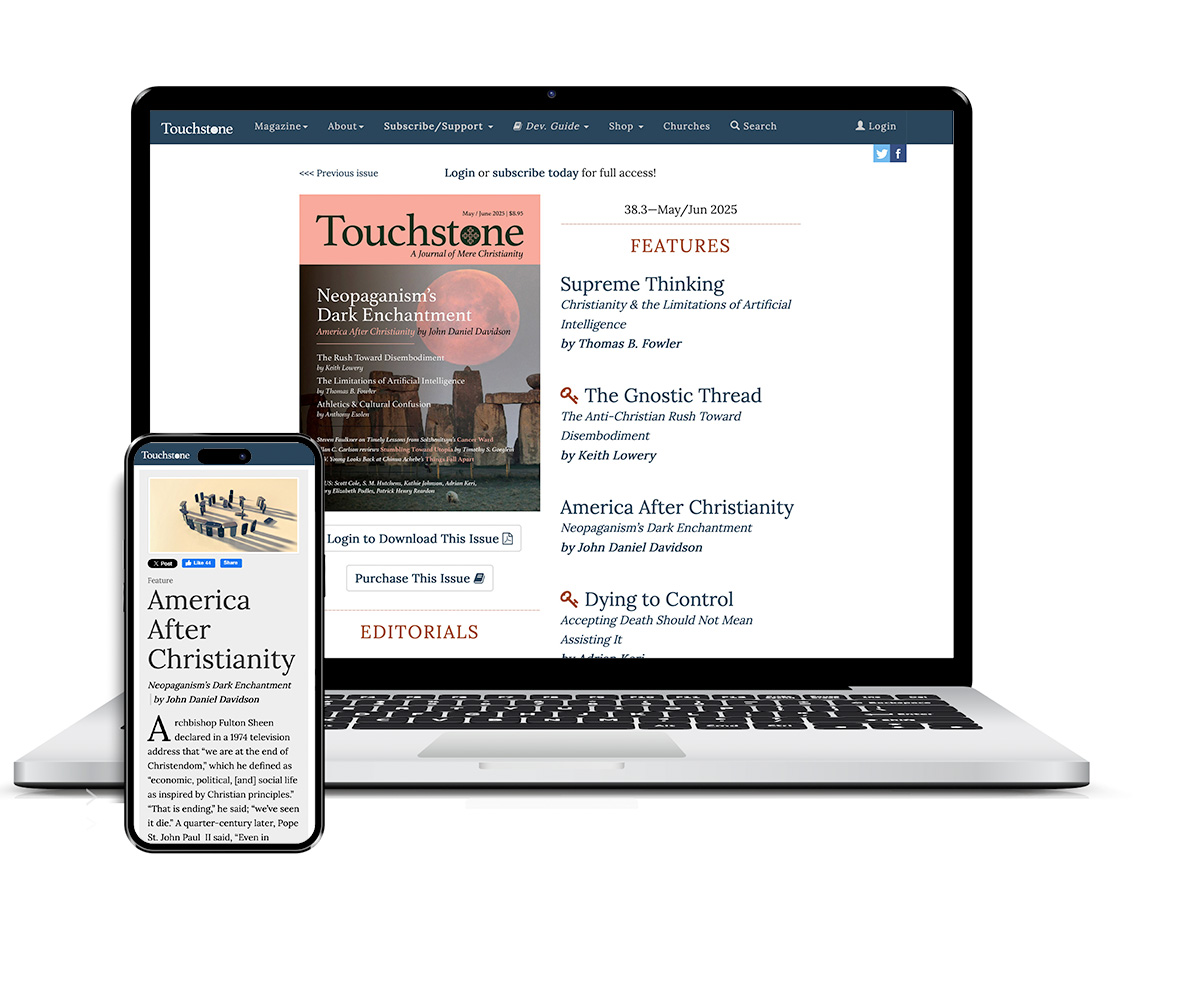
Get a one-year full-access subscription to the Touchstone online archives for only $19.95. That's only $1.66 per month!
bulk subscriptions
Order Touchstone subscriptions in bulk and save $10 per sub! Each subscription includes 6 issues of Touchstone plus full online access to touchstonemag.com—including archives, videos, and pdf downloads of recent issues for only $29.95 each! Great for churches or study groups.
Transactions will be processed on a secure server.
more from the online archives
calling all readers
Please Donate
"There are magazines worth reading but few worth saving . . . Touchstone is just such a magazine."
—Alice von Hildebrand
"Here we do not concede one square millimeter of territory to falsehood, folly, contemporary sentimentality, or fashion. We speak the truth, and let God be our judge. . . . Touchstone is the one committedly Christian conservative journal."
—Anthony Esolen, Touchstone senior editor




